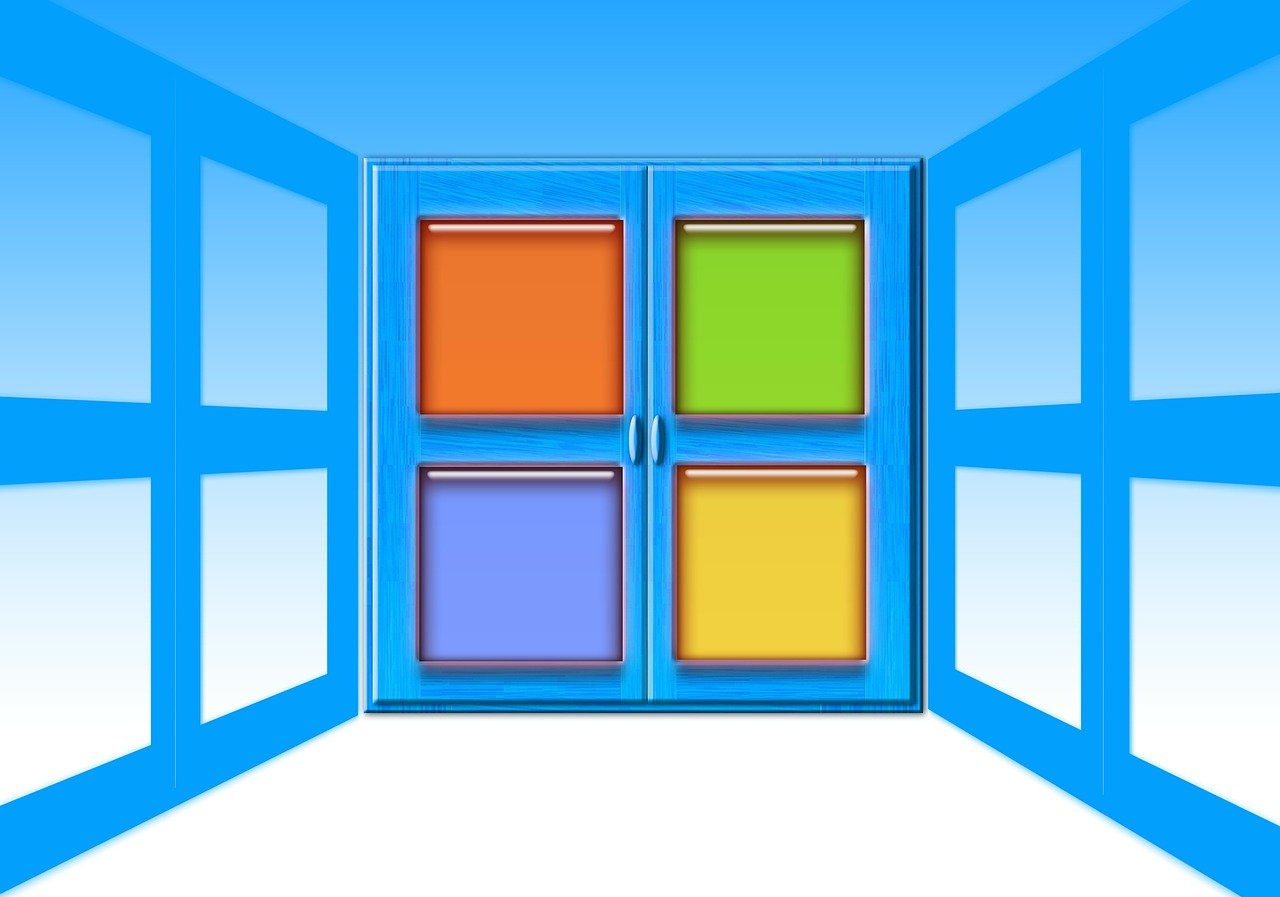A Brief History of Microsoft and the Evolution of Windows
Posted by Jonathan O'Brien

Software development giant Microsoft has been around since 1975. Located in Redmond, Washington, the company has dominated the market for desktop computer operating systems since the 1980s. Their success began with MS-DOS, a text-based operating system, but in 1985, the company introduced the first version of Windows, the first graphical Microsoft OS. Since then, Windows has evolved as technology and users' needs have changed.
- The Founding of Microsoft
- History of Microsoft: Timeline and Facts
- Retracing the Life of Microsoft Co-Founder Paul Allen
- Biography: Microsoft Co-Founder Bill Gates
- Timeline of the Microsoft Corporation
Windows 1
- Nov. 20, 1985
The first version of Windows was unveiled in 1985. It was poorly received, as it relied on the use of a mouse, which most computer users didn't own. However, its point-and-click interface was much simpler to use than DOS, which required people to memorize and type in commands.
Windows 2.03
- Dec. 9, 1987
Windows 2.03 was released in 1987, giving Windows a more appealing look with 256 colors. This version of the Windows operating system was the first to include Word and Excel.
Windows 2.1
- May 27, 1988
Windows 2.1 was the first version of Windows that needed to be installed on a hard drive. Before this, earlier versions of Windows ran from floppy disks.
Windows 2.11
- March 13, 1989
Windows 2.11 was released in 1989, improving the memory management of the OS for greater efficiency. It also added support for the AppleTalk networking protocol.
Windows 3.0
- May 22, 1990
Windows 3.0 was released in 1990, introducing many of the features that would come to be associated with Windows, such as the Program Manager and program icons. It also supported CD-ROM drives and included Solitaire, Minesweeper, and Hearts.
Windows 3.1
- April 6, 1992
Windows 3.1 added drag-and-drop functionality as well as TrueType fonts.
Windows NT 3.1
- July 27, 1993
Windows NT 3.1 was the first Windows OS that was not based on MS-DOS; previous versions had relied on DOS for their underlying architecture. It was also the first 32-bit OS.
Windows 3.11 for Workgroups
- Aug. 11, 1993
Windows 3.11 for Workgroups was marketed toward businesses as an upgraded version of 3.1 that supported networking.
Windows 3.11
- Nov. 8, 1993
Windows 3.11 fixed bugs to improve stability, helping to solidify the status of Windows as a top OS.
Windows 3.2 Chinese Edition
- Nov. 22, 1993
Windows 3.2 Chinese Edition was an updated version of Windows 3.1 tailored toward users of Simplified Chinese, which has a much more complex character set.
Windows NT 3.5
- September 21, 1994
Windows NT 3.5 upgraded its implementation of TCP/IP protocols from NT 3.1.
Windows NT 3.51
- May 30, 1995
Windows NT 3.51 fixed bugs in NT 3.5 and added support for adapter cards that could be used to add functionality to the PC.
Windows 95
- Aug. 24, 1995
Windows 95 was a major relaunch of Windows, completely removing the underlying DOS-based architecture and overhauling the user interface.
Windows NT 4.0
- Aug. 24, 1996
Windows NT 4.0 upgraded the stability of NT 3.51 by improving how the OS managed memory.
Windows 98
- June 25, 1998
Windows 98 was a limited upgrade from Windows 95, adding some bug fixes and cosmetic changes but not much else.
Windows 98 SE
- May 5, 1999
Windows 98 SE brought bug fixes for Windows 98, improved USB support, and integrated DVD-ROM support.
Windows 2000
- Feb. 17, 2000
Windows 2000, also known as W2K, was a business-oriented version of Windows boasting better security features and reliability.
Windows ME
- Sept. 14, 2000
Windows ME, short for Windows Millennium Edition, was cursed with stability issues and generally disliked by users.
Windows XP
- Oct. 25, 2001
Windows XP added support for the more reliable NTFS file system and had a sleek interface as well as impressive performance and stability. XP was popular with users until Microsoft pulled the plug on support in 2009.
Windows Vista
- Jan. 30, 2007
Windows Vista suffered from hardware compatibility problems and was poorly received. However, it did bring one positive change: Vista introduced Bitlocker, a data security feature for hard drives that's still used today.
Windows 7
- Oct. 22, 2009
Windows 7 combined the look and feel of Vista with improved stability.
Windows 8
- Oct. 26, 2012
Windows 8 overhauled the OS to work with touchscreen devices. Microsoft also removed the Start menu, which confused and annoyed desktop computer users.
Windows 8.1
- Oct. 17, 2013
Windows 8.1 brought back the Start menu.
Windows 10
- July 29, 2015
Windows 10 added a virtual assistant named Cortana. It also added a new Web browser, Microsoft Edge, which replaced Internet Explorer.
Windows 11
- Oct. 5, 2021
Windows 11 gave Windows a more Mac-like look and improved the touchscreen experience. It also added the ability to download and run Android apps and integrated Microsoft Teams into the taskbar.
Further Reading on the Evolution of Computers
- Understanding the Personal Computer
- The Computer Mouse Turns 40
- Inventing the Computer
- A Very Brief History of Computing
- The Computer Revolution and How It's Changed Our World
- A Brief History of Small Computers
- Perspectives on the History of the Office Computer
Software Training
Courses by Location
- Cyber Security Training in Northern Virginia
- Computer Programming Classes NYC
- Project Management Training Chicago
- QuickBooks Classes in Houston
- Cyber Security Programs in Maryland
- Cyber Security Training Orlando
- Coding Classes Pearland
- Project Management Classes Dallas
- Cyber Security Classes Los Angeles
- Cyber Security Programs Dallas
- Project Management Certification Atlanta GA
